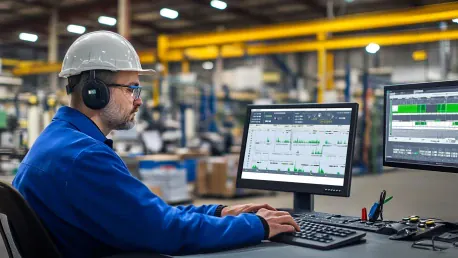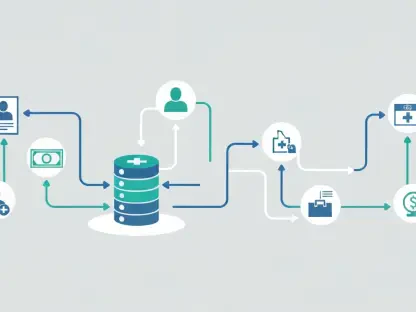The Continuous Thermal Monitoring (CTM) market is poised for significant growth over the next decade, driven by advancements in technology and an increasing emphasis on predictive maintenance. This market expansion is projected to advance from an estimated USD 1.00 billion in 2024 to USD 1.49 billion by 2030, signifying a compound annual growth rate (CAGR) of 6.8%. Central to this rise is the integration of Internet of Things (IoT) devices and artificial intelligence (AI), which together provide real-time data crucial for improving energy efficiency and ensuring operational safety. By leveraging these advanced technologies, industries can now preempt equipment failures, thereby minimizing downtime and optimizing operational efficiency.
Market Dynamics and Growth Projections
The CTM market is experiencing robust growth due to the significant adoption of predictive maintenance strategies across various industries. Predictive maintenance is crucial as it helps minimize downtime and enhances operational efficiency by anticipating equipment failures, shifting industry dynamics dramatically. The projected growth at a compound annual growth rate (CAGR) of 6.8% from 2024 to 2030 highlights the expanding importance of this technology in today’s dynamic industrial environment.
Particularly noteworthy is the role of AI and IoT technologies, which are significantly driving this growth. These technologies enable real-time monitoring and analytics, providing valuable insights that allow for predictive maintenance and operational optimization. As electrical infrastructure undergoes modernization—including the development of smart grids and renewable energy systems—there is a heightened demand for continuous thermal monitoring solutions. This demand is further fueled by the ongoing shift towards industrial automation, which requires real-time data for maintaining optimal performance.
Key Market Drivers
Several pivotal factors are propelling the growth of the CTM market. Chief among them is the growing emphasis on predictive maintenance. Industries across the board are increasingly adopting predictive maintenance as a strategy to reduce downtime and ensure greater operational efficiency. This shift is hinged on the capabilities of CTM systems to provide real-time data and preempt equipment failures, making these systems indispensable in contemporary industrial settings.
A significant driving force is the integration of AI and IoT technologies. These technologies facilitate real-time monitoring and analytics, offering insights crucial for predictive maintenance and overall operational optimization. Additionally, the increasing trend of industrial automation is further contributing to the market’s expansion. Automated systems inherently require continuous monitoring to ensure they operate at peak efficiency. This demand underlines the necessity for CTM systems, which play a critical role in maintaining and optimizing automated operations.
Challenges and Restraints
Despite the clear benefits associated with CTM systems, the market faces several significant challenges and restraints. One of the primary barriers to market expansion is the high initial cost associated with deploying advanced monitoring systems. The substantial investment required for these systems can be a deterrent for many organizations looking to implement them.
Another significant challenge lies in the technical complexities involved in integrating CTM systems with existing infrastructures. The process is often complicated and time-consuming, requiring specialized knowledge and expertise. This integration hurdle can be a major roadblock for organizations, especially those with legacy systems. Moreover, the rising incidence of cyberattacks presents a substantial risk to interconnected and cloud-based monitoring systems. The threat of cyberattacks not only jeopardizes the security of real-time data but also poses significant risks to operational safety, further hindering market growth.
Opportunities in the Market
The CTM market presents several lucrative opportunities for growth, with the rapid deployment of smart grids standing out as one of the most significant. Smart grids require continuous monitoring to ensure efficient energy distribution and management, driving the demand for CTM solutions. As the energy sector evolves, so does the need for advanced monitoring systems that can provide the real-time data necessary for efficient operation and maintenance.
Another substantial opportunity lies in the growing demand for energy efficiency and sustainability across various industries. Sectors such as renewable energy and data centers are increasingly adopting CTM technologies to optimize energy usage and ensure operational safety. Advancements in sensor technology are further enhancing the capabilities of CTM systems, making them more efficient and reliable. These improvements open up new avenues for market growth, as industries seek out more effective solutions for their energy management needs.
Sector-Specific Demand
Different sectors are at the forefront of adopting CTM technologies due to their high demand for efficient energy management and operational safety. The manufacturing sector, for instance, heavily relies on CTM systems to monitor the temperature of electrical components. This monitoring is crucial in preventing equipment failures that could lead to substantial operational disruptions. With real-time data, manufacturers can preempt potential issues, ensuring smoother and more efficient operations.
The healthcare sector is another significant adopter of CTM technologies. Hospitals and healthcare facilities require continuous monitoring to ensure the safety and efficiency of their electrical systems. The CTM systems provide the necessary real-time data to maintain these critical systems, guaranteeing operational safety and efficiency. Additionally, the energy sector, including renewable energy systems, extensively utilizes CTM solutions to optimize energy usage and ensure operational safety. By continuously monitoring the thermal status of their equipment, these sectors can achieve higher efficiency and reliability in their operations.
Major Industry Participants
Several leading companies are driving the growth and innovation within the CTM market. These companies have strong financial backgrounds, extensive product portfolios, and significant market presence. Some of the key players in this space include ABB (Switzerland), Siemens (Germany), Schneider Electric (France), Honeywell International Inc. (US), and Teledyne Technologies Incorporated (US).
These industry leaders are heavily investing in research and development to enhance their product offerings and expand their market presence. They are also focusing on strategic partnerships and collaborations to strengthen their market positions and drive innovation within the CTM market. By leveraging their resources and expertise, these companies are at the forefront of developing advanced CTM solutions that cater to the evolving needs of various industries.
Technological Advancements
Technological advancements are playing a crucial role in the growth of the CTM market. The integration of AI and IoT technologies is enabling real-time monitoring and analytics, providing valuable insights that aid in predictive maintenance and operational optimization. These technologies are essential for industries looking to enhance their operational efficiency and prevent potential equipment failures.
Advancements in sensor technology are also enhancing the capabilities of CTM systems. Modern sensors are more efficient and reliable, providing accurate and real-time data that is crucial for continuous thermal monitoring. These technological advancements are driving the adoption of CTM solutions across various industries, as organizations seek out more effective and efficient ways to manage their energy usage and ensure operational safety.
Cybersecurity Concerns
The Continuous Thermal Monitoring (CTM) market is set to experience notable growth over the coming decade, spurred by technological advancements and a growing focus on predictive maintenance. This expansion is expected to see the market rise from an estimated USD 1.00 billion in 2024 to USD 1.49 billion by 2030, reflecting a compound annual growth rate (CAGR) of 6.8%. A key factor in this growth is the integration of Internet of Things (IoT) devices and artificial intelligence (AI). These technologies work together to provide real-time data that enhance energy efficiency and improve operational safety.
Industries stand to benefit significantly from these advanced technologies by being able to anticipate equipment failures before they occur, which can considerably reduce downtime and optimize operational efficiency. The real-time data collected through IoT and AI systems allow for more precise monitoring of equipment conditions, leading to more informed decision-making and strategic planning for maintenance activities. As a result, the importance of Continuous Thermal Monitoring is becoming increasingly recognized across various sectors, solidifying its role in the future of industrial operations. With the continuous improvement of these technologies, the CTM market is poised to maintain its upward trajectory, driving enhancements in both safety and productivity.









